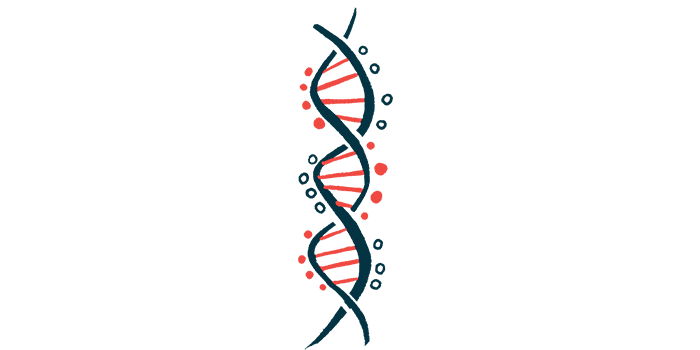Study: Classical EDS Diagnosis Requires Full Clinical, Genetic Exam
Written by |

“A correct diagnosis of [classical Ehlers-Danlos syndrome or] cEDS is not always straightforward,” researchers in Belgium concluded in a new study, in which the scientists urged that anyone suspected of having this type of the rare connective tissue disorder undergo a complete clinical examination, followed by genetic testing.
Such testing should cover all genes linked with EDS, the researchers said.
“Important overlap with other EDS types, especially for patients with [symptoms] at the more severe end of the spectrum, supports the recommendation that genetic work-up should minimally start with panel‐based sequencing including all EDS‐associated genes, as a correct molecular diagnosis is important for genetic counseling and management,” they wrote.
The study, “Clinical and molecular characteristics of 168 probands and 65 relatives with a clinical presentation of classical Ehlers-Danlos syndrome,” was published in the journal Human Mutation.
Classical EDS, one of the most common types of EDS, is caused by defects in collagen, a protein in the connective tissue that provides support and binds together the body’s tissues and organs.
The major hallmarks of cEDS include generalized joint hypermobility and abnormally stretchy skin, called skin hyperextensibility. Other characteristics of cEDS are easy bruising, skin fragility, and abdominal wall hernias, in which the intestines bulge through the muscle of the abdomen. Most patients with cEDS have a family history of the disease, among other minor criteria, the researchers noted.
According to the scientists, around 90% of individuals with clinical signs of cEDS carry a mutation in the COL5A1 or COL5A2 genes, which contain the instructions for parts of the type 5 collagen protein. However, cEDS also may be linked to mutations in other genes.
Now, a team from Ghent University, in Belgium, sought to analyze the molecular characteristics of people diagnosed with or suspected of having cEDS. To that end, the team evaluated 233 individuals either with a suspected diagnosis of cEDS and carrying (or likely carrying) a disease-causing genetic variant, or those with a clinical diagnosis of cEDS but without a variant identified, or with a COL5A1/COL5A2 mutation of unknown significance.
Among the 95 men and 138 women involved in the study, 168 were the first members of their families to receive genetic counseling and/or testing for a suspected hereditary risk for cEDS. In genetic studies, such first family members are called probands. The remaining 65 individuals were relatives of a proband.
A diagnosis based on clinical features was made in 105 individuals (72 probands and 33 relatives). The remaining 128 participants — 96 probands and 32 relatives — had a clinical checklist and a DNA sample for testing.
The researchers first conducted a genetic analysis for the clinically diagnosed group.
A genetic variant in the COL5A1 or COL5A2 genes was found in 49 of the 72 probands with a clinical cEDS diagnosis (68.1%) and in 28 of the 33 relatives. In five probands (6.9%), and one relative, the genetic variant identified was of unknown significance.
Potential disease-causing genetic variants in other genes were identified in 10 probands (13.9%) and in three relatives. No mutations were found in eight probands (11.1%) and in one relative.
Among the remaining 128 individuals, all had a cEDS-causing genetic variant. This meant that, in total, a genetic defect for type 5 collagen was found in 145 probands and in 60 relatives.
In total, 78.6% of probands (114 of 145) and 54 of 60 relatives (90%) carried a likely disease-causing variant in the COL5A1 gene. Also, likely disease-causing mutations in the COL5A2 gene were found in 16.6% of probands (24 individuals) and in two relatives.
Among the group of likely disease-causing mutations, 33 variants in COL5A1 and nine of those in COL5A2 had never been reported in the EDS Variant Database.
Considering all 155 probands with mutation data, 10 (6.5%) had a variant in other genes previously associated with EDS, including COL1A1, TNXB, AEBP1, and PLOD1. Notably, the two cases of mutations in PLOD1 confirmed a diagnosis of kyphoscoliotic EDS.
The researchers then assessed the clinical features of 144 individuals carrying likely disease-causing mutations in COL5A1 and of 24 patients with variants in the COL5A2 gene.
Most (86.8%) with a genetic variant affecting type 5 collagen fulfilled the major clinical criteria for cEDS. Only four individuals (2.4%) — belonging to two different families — failed to fulfill the minimum criteria for cEDS.
“Probands presented with significantly more major clinical criteria than affected relatives,” the researchers wrote.
“Too strict application of the clinical criteria could therefore lead to an underdiagnosis of cEDS,” they added.
Individuals carrying likely disease-causing variants in the COL5A2 gene had, in general, a more severe clinical presentation, or worse symptoms, than those with mutations in COL1A1.
In fact, scoliosis, club feet, abdominal wall hernias, and hip dislocations/hip dysplasia from birth were significantly more frequent in those with COL5A2 variants. Of note, scoliosis is a sideways curvature of the spine while a club foot is a deformity in which the foot is turned inward and down.
Overall, the scientists noted that reaching a correct cEDS diagnosis is complicated and difficult. Thus, a full clinical and genetic examination should be done, they said.
“We recommend that for individuals for whom there is a clinical suspicion of cEDS, the decision to start genetic testing should be made based on a gestalt, the total clinical presentation,” they concluded.







